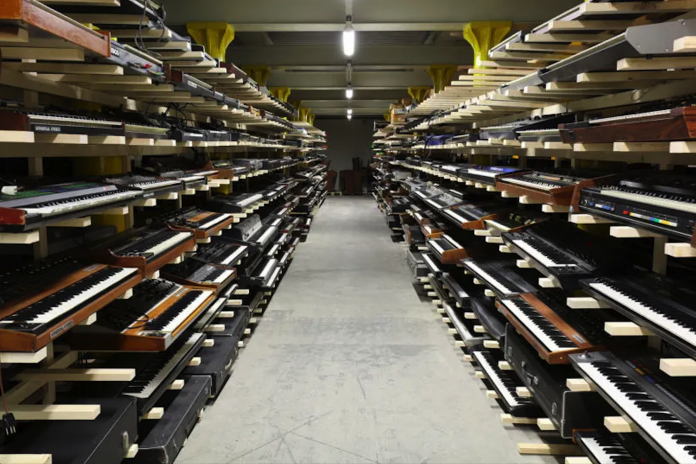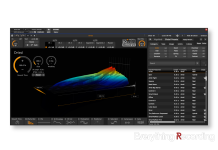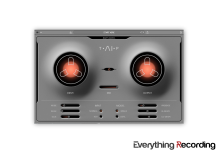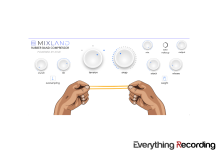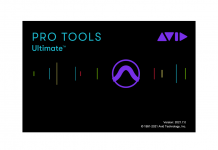In Douglas Adams’ “Hitchhiker’s Guide To The Galaxy“, the titular guidebook explains the endless expanse of outer space as follows: “Space is big. You just won’t believe how vastly, hugely, mind-bogglingly big it is.” For the DAW-based keyboard and synthesizer enthusiast, Arturia’s V Collection, now in it’s 8th edition, represents a collection of instruments that seeks to answer just how endless a concept like “endless” is.
V Collection 8 is, put another way, a buffet of keyboard instruments ranging far and wide – expertly modeled, infintesimally configurable and stunningly rendered. I first approached this review assuming that V Collection 8 was focused largely on analog synthesizer emulation with a few curiosities tossed in for good measure. Once I loaded the AnalogLab front-end, the realization came over me quickly.
This does just about everything – including things the original instruments could never dream of. And again – it’s really big. Like, 28 different instruments and a gazillion patches big. As in, this could be the only software instrument you ever need big.
A CAREER IN MODELING
French developers Arturia cut their teeth at the start of the physical modeling gold rush. Prior to the mid 1990’s, most everything being released was based on PCM technology (yes, with a few notable exceptions). PCM (or “Pulse Code Modulation“) was a gimmicky way of saying “these are samples”. Incoming signal, represented as voltage is then hacked up into… well, just read the link if you don’t know how this works. At the time, the average synthesizer or workstation could only store so much information in its onboard ROM. Many manufacturers developed their own add-on ROM cards but the technology was still limited by the amount of memory you could physically fit into a small card, to say nothing of the fact even a paltry 8MB of memory still commanded a hefty price tag. This same approach applied to samplers, loaded into RAM from floppies or a hard drive. The more realistic you wanted it to sound, the more individual samples were necessary. Again, that space was limited and costly.
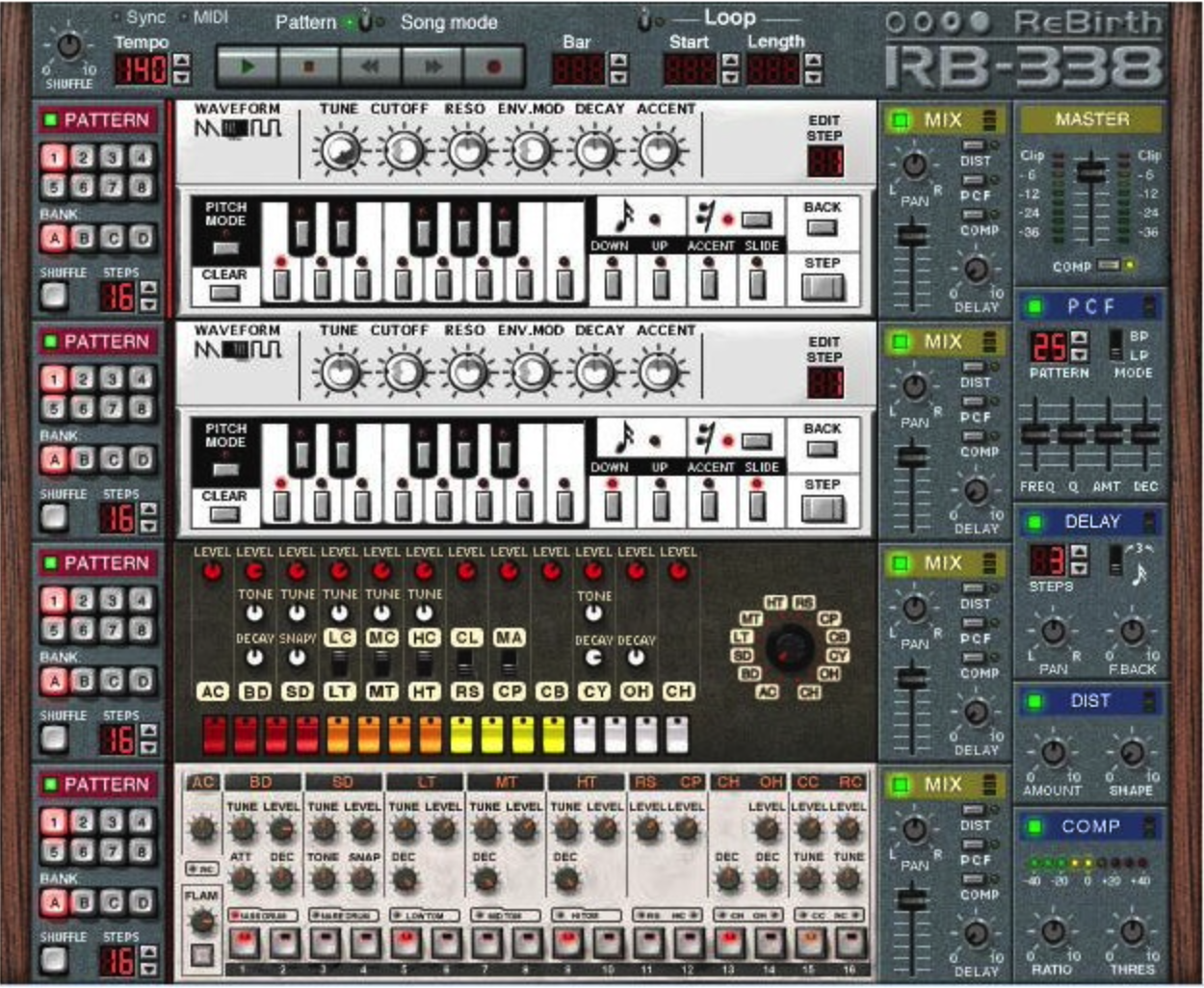
Two pivotal things would happen in this same era. For one, engineers began talking in hushed tones about a new approach to recreating the way sound was created called “physical modeling“. Physical modeling (or “Virtual Analog”) wasn’t playing back previously recorded sounds, it used complex DSP algorithms to recreate the way the sounds themselves were actually created and processed.
It was also during this time that the music world was rekindling its dormant love affair with the analog synthesizer – particularly in the form of what was then (and for many of us still…) called “techno”. Though the Clavia Nord Lead would be the first to market in the form of an actual keyboard, personal computer CPU’s were now just reaching the speeds to crunch the numbers themselves. For something like the now-very-in-demand Roland TB-303, TR-808 and 909, this proved do-able with the release of Propellerheads RB-338 “Rebirth” software. Fitting entirely on a standard 1.4MB floppy disk, it offered the hallowed yippity-yerpity-byow-byow-boom-tish-boom-tish sound of acid techno right out of the box – taking bedroom producers to their very own higher state of consciousness.
FROM RECREATION TO EMULATION TO INSPIRATION
From the primitive sines, saws and squares of subtractive synthesis, the race to recreate other classics from the vault with this technology was quickly on. Arturia was one of the first – arriving in 1999 with their flagship Storm – a suite of retro-influenced software instruments. Storm was not unlike Propellerhead’s follow-up, Reason, which gave the user over a dozen synthesizers and effects along its own proprietary DAW system. You could compose entire tracks within Storm or slave to the host application of your choosing. And though it looks primordial by today’s standards, we can’t overstate what a mammoth step forward this represented – especially compared to that Roland D-50 and it’s pithy “Stage Piano” preset gathering dust in the corner.

Not one to rest on their laurels, Arturia went on to partner with none other than the architect of all-things-analog, Bob Moog (one last time, it rhymes with “toad”) to create the Modular V and their own TAE (true analog emulation) algorithm. And ever since, their remarkably true-to-form emulations of formidable classics – the ARP 2600, the MiniMoog, and the Jupiter 8 to name just a few – have continued to diversify further and further from “just synthesizers”.
Now some twenty years later, Arturia continues to lead the music production world with not only their fantastic synthesizer emulations (see our glowing praise of the OB-Xa and Casio CZ-1 here), but literally anything with black and white keys attached. Every subsequent release of their V Collection has added not only new synthesizers, but acoustic and electric pianos, organs of every shape and size and early digital machines (my how we’ve come full circle, we’re now emulating the PCM technology we’ve replaced).
TESTING TWO INDUSTRY TITANS
Though neither our site nor your attention span have the bandwidth for a piece-by-piece run down, I feel compelled to talk a bit about the Jun-V6 and Jup-8 synths – as I have at one point owned (and very much loved) working on both. The originals need absolutely no introduction and have cemented their rightful place in the highest echelons of synthesis history. Sure, it’s been a while since I’ve had either – but having spent years with them both I was foaming at the mouth to hear them roar again. And not to give away the ending, but Arturia delivers that unmistakable Roland “thing”.
The Juno 106 was actually a bit of a first for Roland, as the oscillators and filters themselves were analog, but the actual control of them was digital. This made for a slightly different and more linear response curve on the instrument’s sliders. After mapping my MIDI controller to a few of the ‘usual suspect’ parameters like VCF cutoff and resonance, the instrument responded in kind. Everything that there is to love about the Juno – the dense pads, the rumbling lows and the clutter-cutting leads.
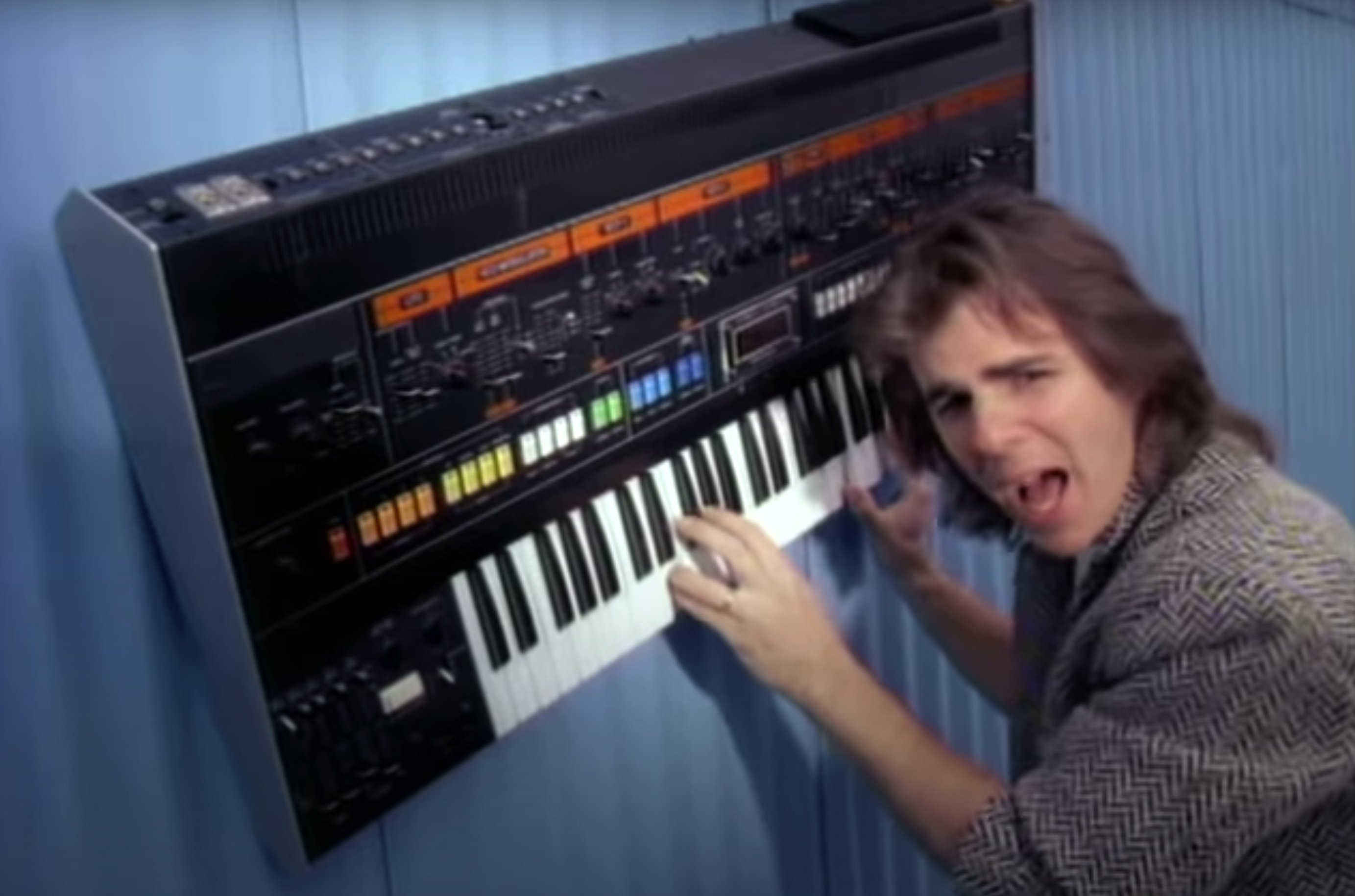
And as for the Jupiter 8 rendition well, let me just say that this particular instrument in its original form gave you an ability to stack voices to create a multi-timbral (but mono-behaving) bass synthesizer that could rattle out your teeth. Given the nature of analog oscillators and their tendency to always be drifting in just the slightest of near-imperceptible ways, putting eight voices into a single note resulted in an electronic earthquake. More importantly, these sorts of quirks and curiosities are extremely well-represented in their virtual likeness.
Of course, a good lot of what made “performing” on their hardware forefathers was having a gigantic fascia populated with knobs, switches and sliders and, to be honest, that is one thing the user will need to address. Luckily, as is the fashion with Arturia’s software instruments, mapping continuous controllers is as simple an affair as possible. And yes, they do offer their own line of USB controllers should you wish to keep it in the family. Bear in mind, fully mapping out something like the top panel of a Jupiter is going to take some serious ingenuity. For me, personally, I was happy to create individual maps for each new patch.
On that subject, while every instrument in V Collection 8 is brimming with hundreds of presets, new patch creation is simple, intuitive and – at least in this writer’s opinion – the “real” way to squeeze out each and every quirk from these (and all) of the synths on display. That’s what has always made performing on these machines so unique – you can approach it with a nine-year-old’s intellectual curiosity, twisting and turning through the interface until inspiration finds you.

Like the other synths in the modern-day Arturia line-up, there is an additional layer of available windows and modifiers. Not limited to the simple shapes of traditional LFO-types (but certainly not as whacked out as the whole ‘import teddybear.gif and make a wavetable world that Serum lives in), you can draw, bend, twist and step additional envelopes and turn them loose on virtually any parameter you darn well please, be it pitch, filter or the amount of reverb time). And yes, Virginia, these of course, synch to tempo or ms. Ah, yes. Better living through technology.
AND NOW, FOR SOMETHING COMPLETELY DIFFERENT
From the patch-cabled ARP and Moog Modular to the hulking Matrix 12, you’ll be knee deep in the hum of analog oscillators. But that’s becoming more and more just half of what the V Collection is all about. And one could begin to think after an hour or two of tinkering that, perhaps, you don’t necessarily need THAT many subtractive analog synth options. And that’s where the buffet of keyboards truly begins.
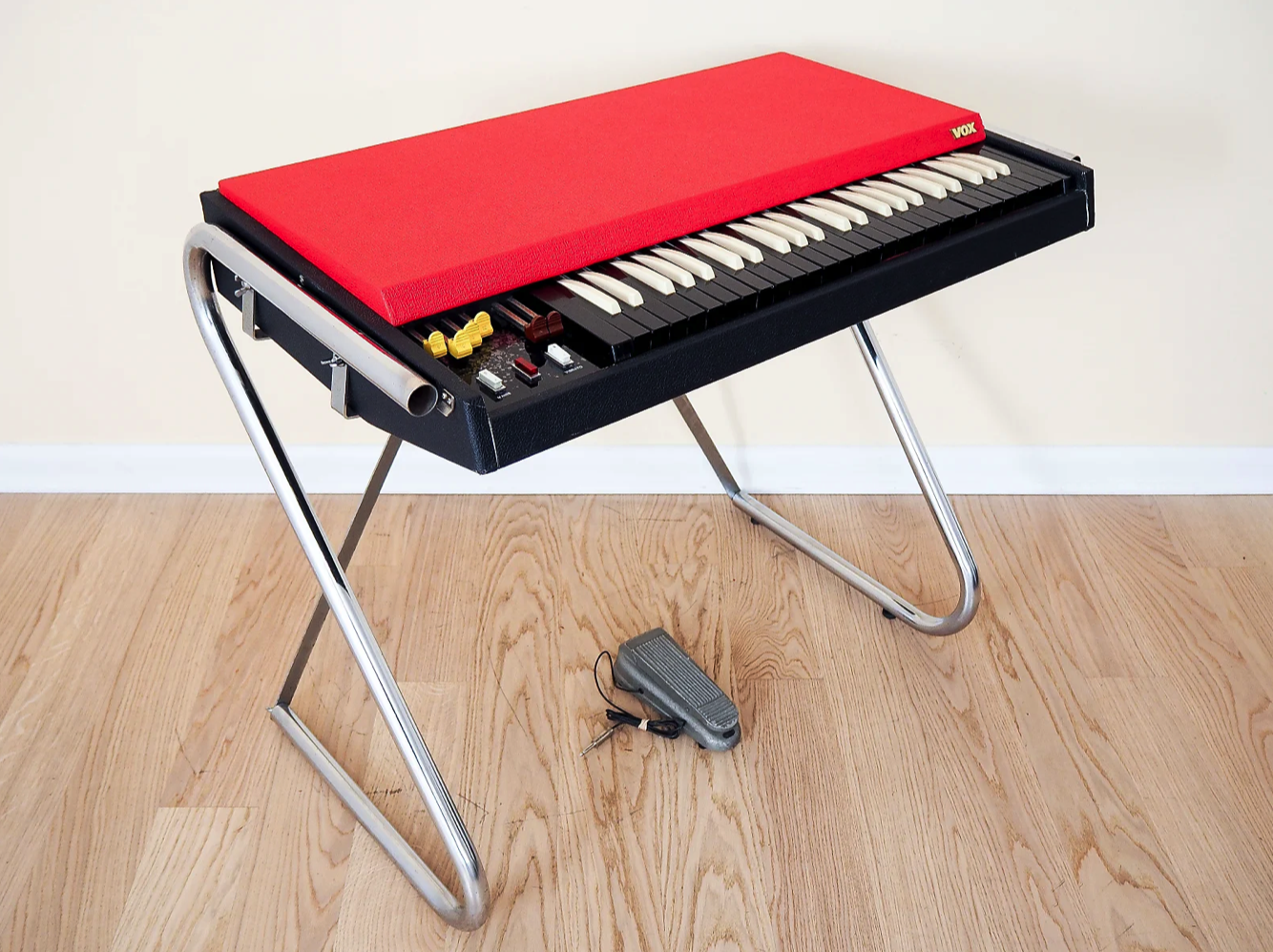
The rest of V Collection is like going to a museum exhibit of keyboard instruments, except that everything works, is plugged in and you’re allowed to touch them. Let’s start with some greatest hits here, rightly with Arturia Piano V. From uprights to concert grands, you can tickle the ivory of nine different and breathtakingly realistic pianos, all while moving microphones, changing the environment, adjusting damping and more. And for the funk and soft-rock jet set, you’ve got the aforementioned Stage 73, an impeccably modeled Wurlitzer 200A and very-superstitious Clavinet. Sporting options like amplifiers and speaker cabinets (including a faithful Leslie-type rotating effect), it’s hard to imagine not finding the exact sound you’re looking for (having such a robust library of presets certainly doesn’t hurt).
Organs such as the Vox Continental, the Hammond B-3, Farfisa and even the iconic Mellotron are all very well-represented (you have to file the Mellotron somewhere). Church it up with big rock arena bombast, or disappear into the Strawberry Fields (then switch to the Farfisa when those strawberries kick in). I’m running out of places and ways to say just how much realism is packed into these instruments. If anything, they sound a little too clean and well-maintained, as anyone who’s owned these things will tell you that it takes a little more than elbow grease to keep the real editions running.
Scouring through all there was to be scoured, I did have to stop and play with the Mellotron for a while. If you’re not familiar – the Mellotron is an amazing invention considering what it was trying to do for the time. In 1963, there was no such animal as “looping that” unless you literally wound a spliced loop of tape around a few extra mic stands (and now you know why it’s called “looping”.

The Mellotron quite literally had several octaves of running tape loops, using tape playback heads as piano hammers. It’s mechanical fluctuations gave the sound an ethereal “something” that you will not get from a sampler. Just playing the Arturia version kicks off a deep dig of 60’s psychedelia and rock – and while you can certainly join a Beatles cover band, the possibilities are endless for creating multi textured dreampop and shoegaze ambience.
Lastly, the Vocoder V is ready to indulge your creative vocal-processing whims – be they going around the world with Daft Punk or saying hello to Mr. Roboto in proper Japanese. Between us, I could live without hearing another vocal ever treated in such a way, but I also admit that I’m A) in the minority and B) still impressed with just how incredibly well Arturia’s digitally-modeled rendition captures the quirks and eccentricities of the original hardware.
REDISCOVERING DIGITAL’S PRIMITIVE ORIGINS
After twenty-five years of producing electronic music in its many forms, I honestly wasn’t bowled over by having so many fantastically-modeled analog supersynths. That’s not to say they don’t sound great – they do. It’s just, well, I’ve been at this a while and, for that matter, so has Arturia. What I wanted to get into was this third column – the digital boneyard. Today’s fledgling producer might not even be able to envision just what incredible achievements the digital machines of yore were for their time.
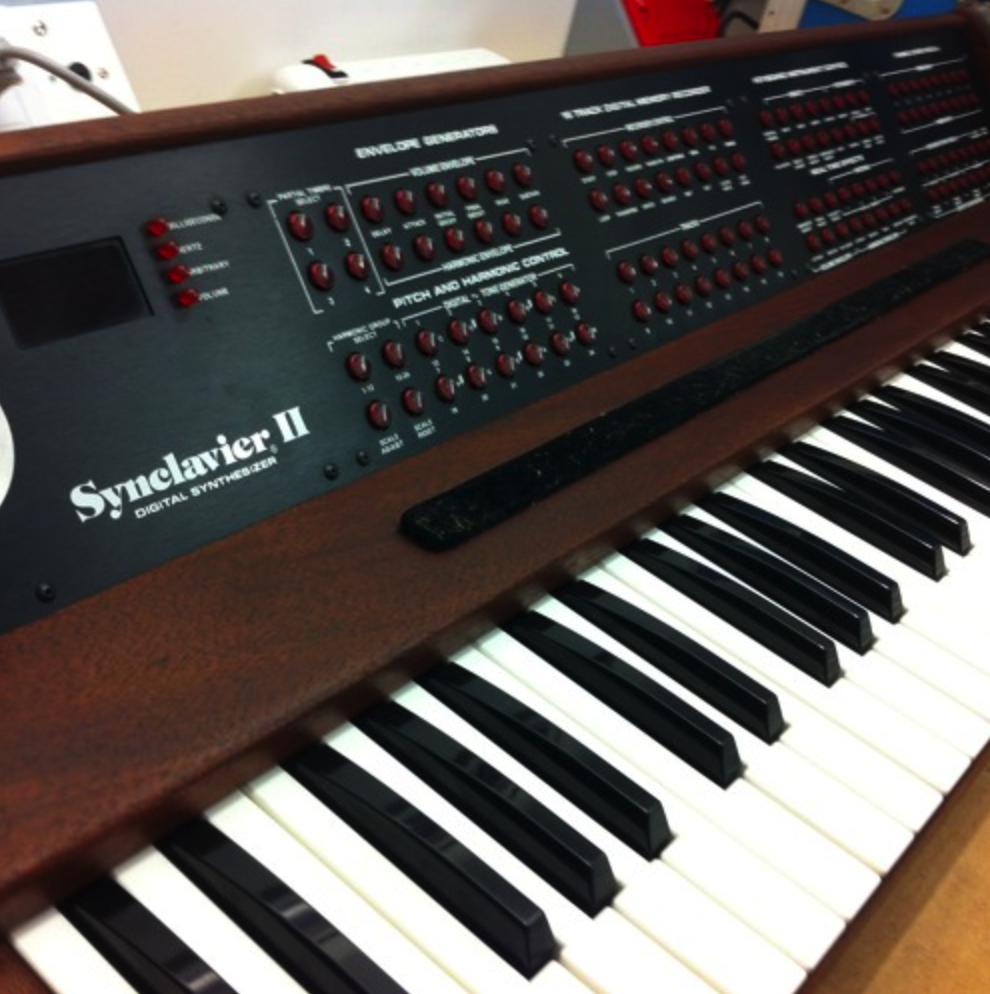
Being able to dive into enjoying their inimitable sound of the Synclavier II – a pivotal, computer-assisted additive and FM beast of a machine without so much as cracking a manual is a gift from the synthesis heaven. To say nothing of the fact these workstations having configurations costing in the hundreds of thousands, simply programming one was reserved for the pocket-protector crowd. But not for the V Collector – you’ll be able to dive into the far corners of this 80’s hitmaker (and the presets certainly take us aging Gen X types back to our neon-colored youth).
Next up, the Emu V puts the user into the John Hughes movie soundtrack of their choosing. The EMU Emulator II, a damn-near-iconic sampler of the era, enabled scores of pop hits, hip-hop breakthroughs and dog-barking-renditions of “Jingle Bells”. Now, as digital technology of the time tended to go, your meager sampling rate and bit depth, combined with the analog architecture to try and smooth it over, lent itself to a quite unique sound – one that you won’t just get from the average bitcrusher. Combined with an updated rendition of the Emu’s internal sequencer and (as to be expected) a layer of Arturia’s modern niceties, this just might become your favorite soft sampler – and down-rez effect. That lightly-toasted 33kHz sampling rate and 12-bit depth, buttered with a 4-pole analog filter is “the sound” of hundreds of timeless recordings and, as you’re likely unsurprised to read by this point, nailed handily by Arturia’s modeling algorithms.
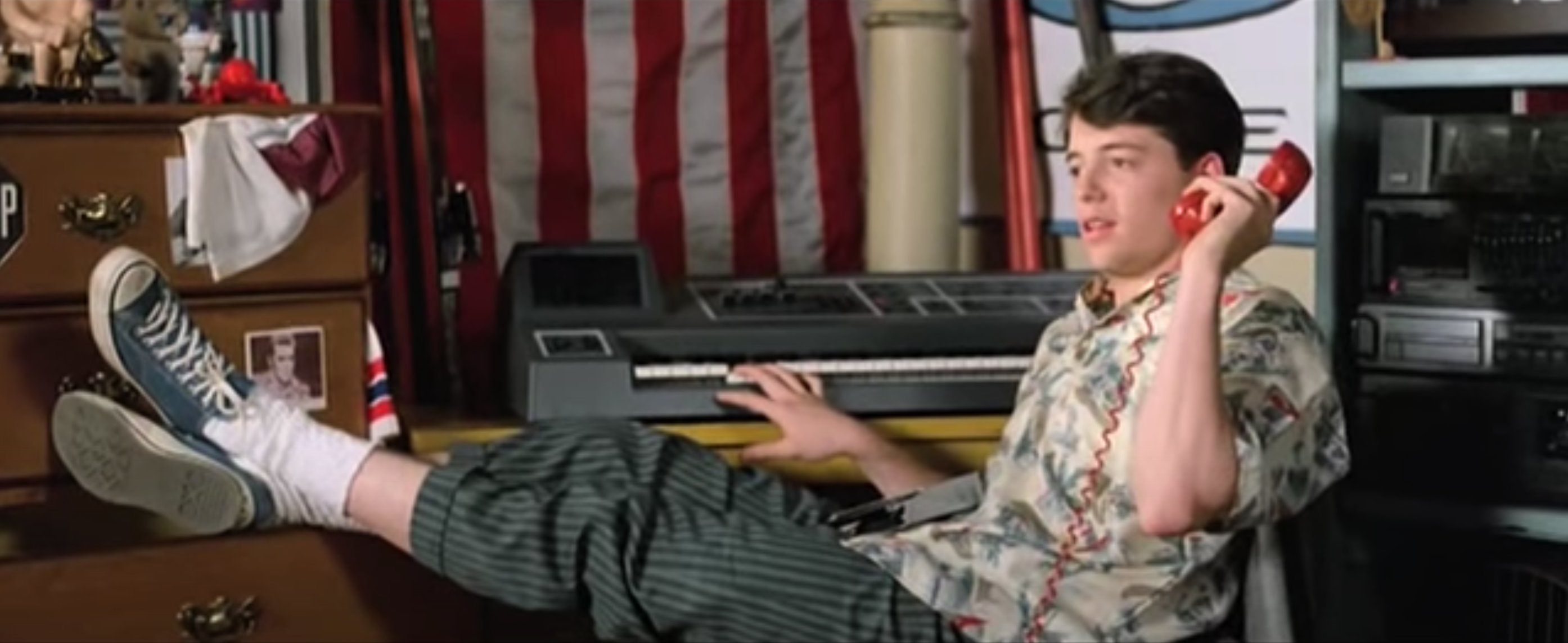
And lastly, it just bears mentioning that the classic FM (and similar) machines like the Yamaha DX7 and Casio CZ offer something that’s equal parts dead-ringer 80’s machine as it is creatively inspiring tool for virtually any genre of music, whether that means Biosphere-esque synthetic new age ambience or the groundwork for a whole new genre of your devising. Having not only ready access to “that preset” and “that other preset” from “that one song” is great – but these early FM synthesizers can be contorted into a world of beyond-the-point-of-origin sound design, once you learn to do things on its terms.
At the risk of repeating ourselves here, having Arturia’s modulation matrix and pivotal controller abilities launches these vintage beasts into levels of control and that the original engineers likely never once deemed possible. Or maybe they did, but there was no way you were getting there in 1983. These truly are enlightened times, sound designers and musicians are standing on the shoulders of giants with this amount of raw sound and near-myopic levels of control.
THE MAD SCIENTIST’S LIBRARY
To literally own and operate a collection of instruments on this barely-fathomable scale (where do you plan on keeping nine pianos stored and in tune, much less miked up with a piano tech on staff?) is obviously the sort of thing that would have been a pipe dream to all but the most ridiculously well-moneyed artists at the turn of the century. But now – now that anyone with $600 and a computer has this same kind of access? You’re going to need some way to access them all. And for that, my discerning ebony-and-ivory fiends, I welcome you to the world of Arturia’s front end AnalogLab.

AnalogLab is the (and I hate LOTR references) “one plugin to control them all”. Put simply, it’s the front-end to all of the V Collection’s instruments and presets in a handy uber-librarian. Search by instrument, keyword, patch name, creator, year, whatever… the patches themselves appear to have a lot of tag data embedded in them. You pick the sound, AnalogLab loads it up and voila. Run it as is, or open the instrument and tweak it to perfection. And though we are a recording-focused website (as the title would imply), I certainly see AnalogLab being a massive boon to live performances (assuming we ever start doing that again).
This software alone could occupy a complete review, especially when you realize the bundled PatchWorks contains enough creative inspiration to power Manhattan. Admittedly? I’m not a presets guy. Never have been. But that’s just me – and I can certainly appreciate that using these as a jumping-off (or landing) point is capable of taking the perspiration out of inspiration. Musicians who want the shortest distance between “I have an idea” and “got it” will rejoice – as are those who want to preserve and share their own creations.
Let’s just say you’re composing your latest creation and have written an eight bar chord progression. You’re not sure though – at first the intention was an acoustic piano, but that curiosity bug is biting. Maybe an electric piano? An organ? Wait, what if we split the chords and let a monosynth tackle the root and then play out the rest with a cheap-and-cheesy 80’s PCM synth? Loading and unloading all the options is going to run afoul of your creativity’s speed and desire. That’s where AnalogLab shines. With almost forty instruments to choose from, shortening the distance between inspiration and it coming out of your monitors makes this indispensable.
SO, WHAT’S TO DISLIKE?
To be honest, not much. V Collection 8 isn’t so much a revolution as it is an evolution at this point. Arturia has continued to simultaneously hone the process by which these instruments are created and expand their already enormous bench of keyboard heavyweights. There’s quite literally something for everyone – though those with quite specific tastes will likely want to buttress their particular niche. For the rest of us, the generalists, being able to choose from nine pianos or however many analog synths is more than plenty – if not even a tad bit overboard.
It’s my sincerest hope that, as Arturia scans the classifieds and pawn shops for more vintage instruments to do “that bodysnatcher thing” on, we will get to see some a few more off-the-beaten-path-type synths and keys from decades ago. Oh… you want examples? I would love to see a dead on recreation of the OSC OSCar in the lineup – it’s not nearly as well known but truly has a sound all its own. How about Elektron’s original SIDStation, an instrument created around the internal Commodore 64 SID chip? And as long as we’re still talking, Kurzweil’s V.A.S.T. synth architecture, featured in the k2000 and k2500 synth and sampler workstations? We’d be just in time for that big 90’s industrial rock revival.
I’d also like to see a bit more in the way of vintage drum machine sounds in coming updates. Not just the easily-made-from-synthesizer “pyoo pyoo” toms, pink noise snares and sine wave kicks, but full modules like the Simmons SDS-1, Linn Drum and percussion sounds from those early samplers. Yes, I know, this is a keyboard collection, but I’ll take a Roland CR-5000 happily to sit atop my Oberheim.
THE WHOLE ENCHILADA
It should be said here that Arturia is not just another pretty face in the emulation game – they have a quite handsome line of their own hardware synthesizers, audio and keyboard interfaces (and the criminally underlooked “Pigments” softsynth). They’ve by now extended their product range to become electronic music’s one-stop-shop – you could outfit almost an entire studio with their gear – just add computer and monitors.
Point being, this is a company that has not only planted their flag for the synthesizer revolution’s second act, but are continuing to light a path ahead while giving today’s keyboardists unprecedented access to instruments of a bygone era. These relics of a bygone era are, above all else, instruments. And while you may not be reaching out and touching the keys and knobs of the real thing, I can’t fathom a way Arturia could get you any closer.
AnalogLab and Patchworks make easy work of finding, creating and organizing presets.
The widest possible range of keyboard instruments from synths to pianos and onward.
Beware the "option anxiety". There's such a thing as too many choices.
Can you tell I'm reaching here? This software collection is damn impressive in every way.



